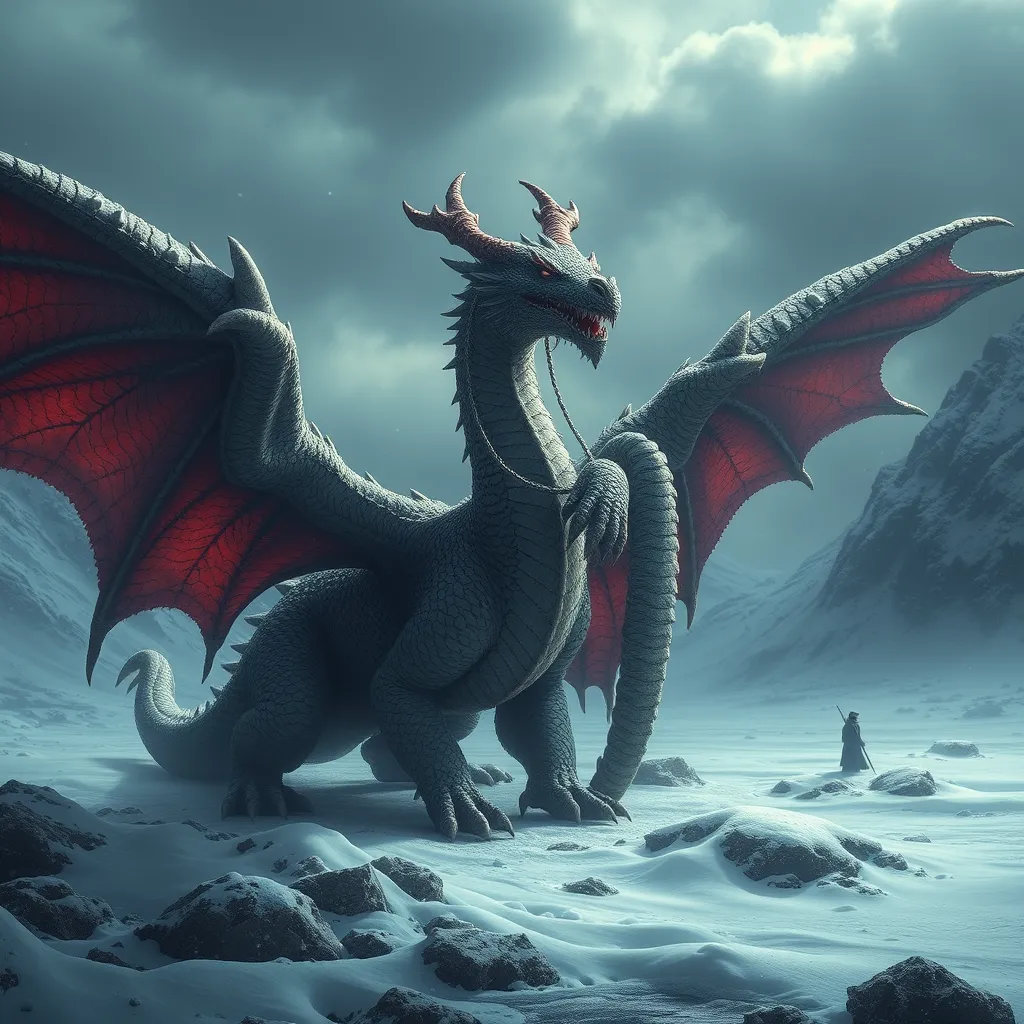Dragons of the North: Scandinavian Legends of Wyverns and their Fierce Prowess
I. Introduction to Scandinavian Dragon Mythology
Dragons have long captured the imagination of cultures across the globe, serving as powerful symbols of chaos, destruction, and transformation. In Scandinavian mythology, they take on unique forms, particularly as wyverns, which are often depicted as fierce, two-legged dragons with wings. The presence of these creatures in folklore highlights the complex relationship between humans and nature, embodying both fear and reverence.
Wyverns are particularly significant in Scandinavian folklore, where they are woven into the fabric of stories that reflect the values, fears, and aspirations of the ancient Norse people. This article explores the rich tapestry of wyvern legends, their defining characteristics, historical context, and their enduring legacy in contemporary culture.
II. Defining the Wyvern: Characteristics and Symbolism
In Scandinavian legends, wyverns are typically characterized by their distinctive physical features. They are often depicted as:
- Two-legged creatures with a long, serpentine body
- Large, bat-like wings
- A long, barbed tail
- Fiery breath or venomous fangs
The symbolism of wyverns in Norse culture is multifaceted. They represent:
- Power and dominance over nature
- Guardianship of treasure and wealth
- Chaos and destruction, often linked with the end of the world (Ragnarök)
These creatures reflect the duality of creation and destruction, embodying forces that are both revered and feared in Norse mythology.
III. Historical Context: Dragons in Viking Society
In Viking society, dragons played a central role in art and literature, serving as motifs that conveyed strength and valor. The Norse sagas and Eddas frequently feature dragons, illustrating the importance of these creatures in Viking lore.
Dragons influenced Viking ship design, where dragon-headed prows were common. These designs were not merely decorative; they symbolized protection and ferocity, instilling fear in enemies while simultaneously showcasing the prowess of the Viking warriors. The ships themselves were often seen as extensions of the dragon’s power, sailing forth to conquer new lands.
IV. Famous Scandinavian Wyverns and Their Legends
Many notable wyverns inhabit Scandinavian folklore, each with its own story and moral lesson. Two of the most famous include:
- Fafnir: Originally a dwarf, Fafnir transformed into a dragon to guard his ill-gotten treasure. His tale is a cautionary one about greed and the corrupting power of wealth.
- Jörmungandr: Also known as the Midgard Serpent, this creature encircles the earth and is prophesied to fight Thor during Ragnarök. Jörmungandr symbolizes the cyclical nature of life and death.
These stories convey important morals, often warning against hubris, greed, and the inevitable consequences of one’s actions.
V. The Wyvern’s Role in Norse Mythology and Religion
In Norse mythology, wyverns are often associated with various gods and goddesses. For instance, they are linked to:
- Odin: The Allfather is sometimes depicted alongside dragons, symbolizing wisdom and the complexity of life.
- Thor: His battles with dragon-like creatures embody the struggle between order and chaos.
Wyverns held significant roles in rituals and beliefs, often seen as omens or protectors of sacred spaces. Their imagery adorned talismans and artifacts, believed to offer protection against evil forces.
VI. Dragons as Cultural Icons: Literature and Art
Wyverns have been featured prominently in medieval manuscripts and sagas, where they are depicted in a variety of artistic styles. These representations highlight the fearsome nature of these creatures, often portraying them in battles with heroic figures.
The impact of these legends extends into modern Scandinavian literature and art, where authors and artists draw inspiration from ancient tales. Contemporary works often reinterpret these myths, exploring themes of identity, power, and the human experience in relation to nature.
VII. Modern Interpretations and Representations of Wyverns
In contemporary media, Scandinavian dragons have found new life, appearing in films, video games, and literature. These modern interpretations often blend traditional lore with innovative storytelling, making the ancient creatures accessible to a new generation. Examples include:
- Fantasy novels that reimagine wyverns as complex characters
- Television series that explore Norse mythology with a modern twist
- Video games that feature wyverns as formidable foes or allies
The resurgence of interest in dragon lore reflects a broader fascination with mythology and the timeless themes these stories represent.
VIII. Conclusion: The Enduring Legacy of Scandinavian Wyverns
The cultural impact of wyverns in Scandinavia is profound, influencing art, literature, and popular culture throughout the ages. These mythical creatures serve as a testament to the rich narrative traditions of the Norse people, embodying both the beauty and terror of nature.
As we reflect on these legends today, we recognize their relevance in a world that continually grapples with the balance of power, nature, and humanity’s place within it. The stories of wyverns remind us of the dangers of greed and hubris, celebrating the enduring strength of myth in shaping our understanding of the world.



